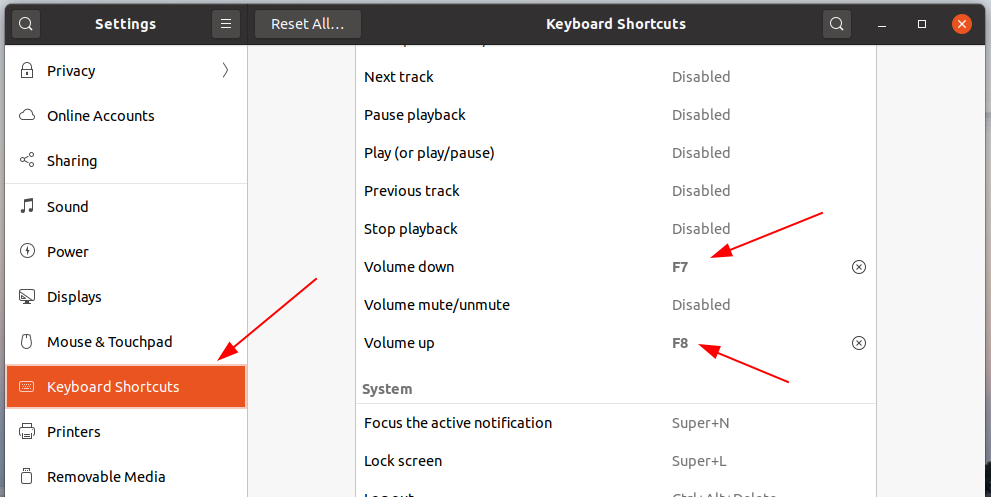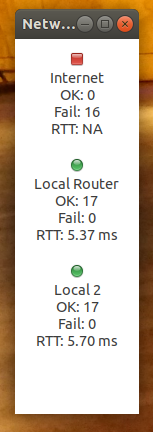 For many many years I’ve used ping in a shell window which I placed in the lower right corner of the screen to monitor my Internet connectivity. So when something network related stopped working I would immediately look there to see if the Internet was still reachable. Crude, but quite effective. But being far from perfect I’ve now spent a bit of time to write a nice GUI program for the purpose that also expands the functionality a bit.
For many many years I’ve used ping in a shell window which I placed in the lower right corner of the screen to monitor my Internet connectivity. So when something network related stopped working I would immediately look there to see if the Internet was still reachable. Crude, but quite effective. But being far from perfect I’ve now spent a bit of time to write a nice GUI program for the purpose that also expands the functionality a bit.
Evolving Tablet Use – What’s the Difference Between a 320 vs. a 650 Euro Tablet?
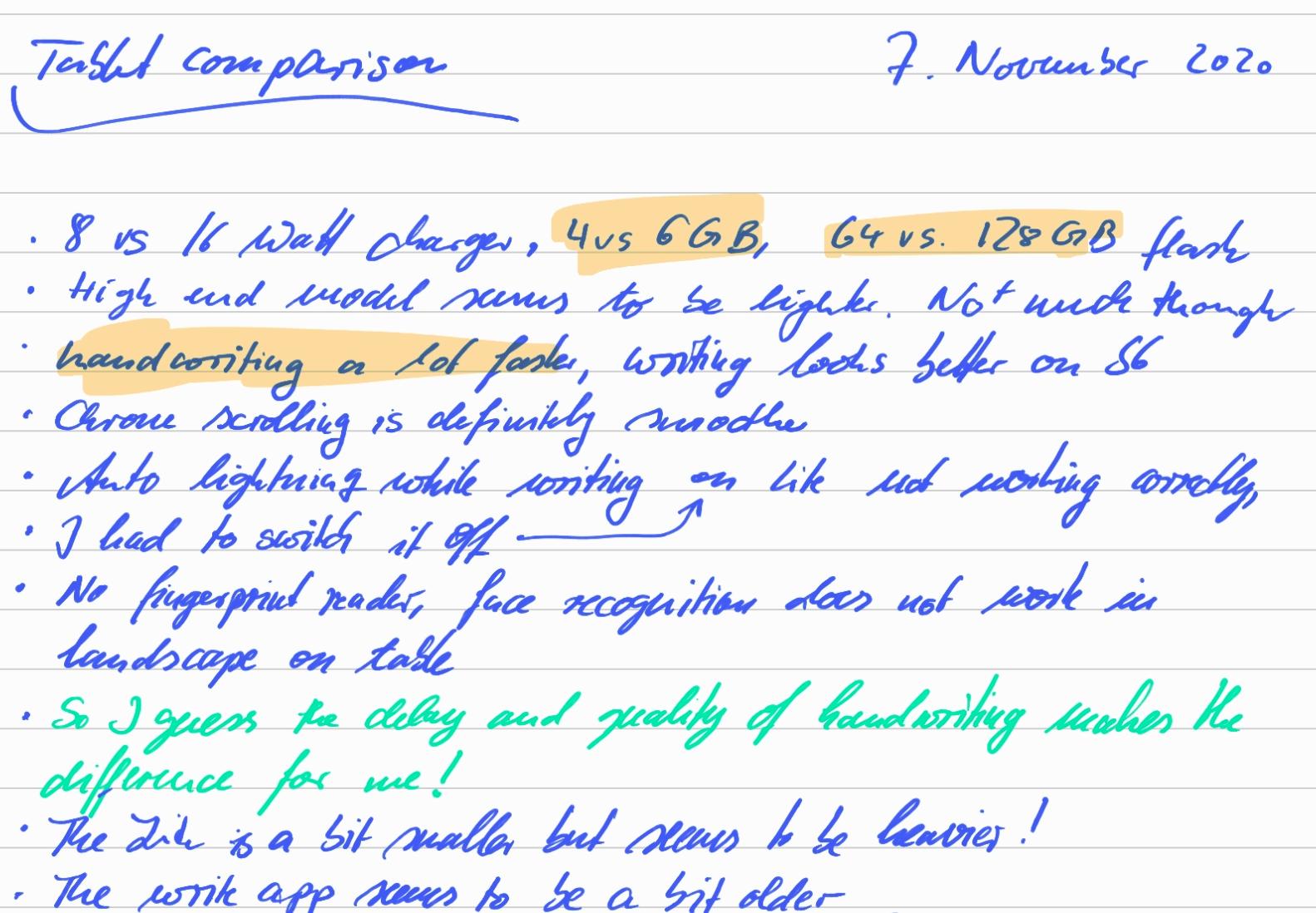 I’ve been using a tablet on and off for many years now. However, it’s been mostly off as I was mainly using this device type for media consumption, i.e. web browsing, videos, reading ebooks, etc. rather than creating content. Recently, however, I’ve taken another look at tablets with a pen and how they can be used in combination with handwriting notes and for annotating PDFs. While entry level tablets can be had for less than 200 euros these days, it looks like those that can handle pens well for handwriting start at around 300 euros. To see what kind of difference price makes in 2020 for the use cases I had in mind, I bought a €650 tablet and another one for €320. Both came with the pen included. I don’t want to mention makes and models here because I don’t think that’s relevant for the comparison. And indeed, the difference is quite noticeable, not only in the details.
I’ve been using a tablet on and off for many years now. However, it’s been mostly off as I was mainly using this device type for media consumption, i.e. web browsing, videos, reading ebooks, etc. rather than creating content. Recently, however, I’ve taken another look at tablets with a pen and how they can be used in combination with handwriting notes and for annotating PDFs. While entry level tablets can be had for less than 200 euros these days, it looks like those that can handle pens well for handwriting start at around 300 euros. To see what kind of difference price makes in 2020 for the use cases I had in mind, I bought a €650 tablet and another one for €320. Both came with the pen included. I don’t want to mention makes and models here because I don’t think that’s relevant for the comparison. And indeed, the difference is quite noticeable, not only in the details.
Continue reading Evolving Tablet Use – What’s the Difference Between a 320 vs. a 650 Euro Tablet?
My DSL Line Utilization is at 1.17%
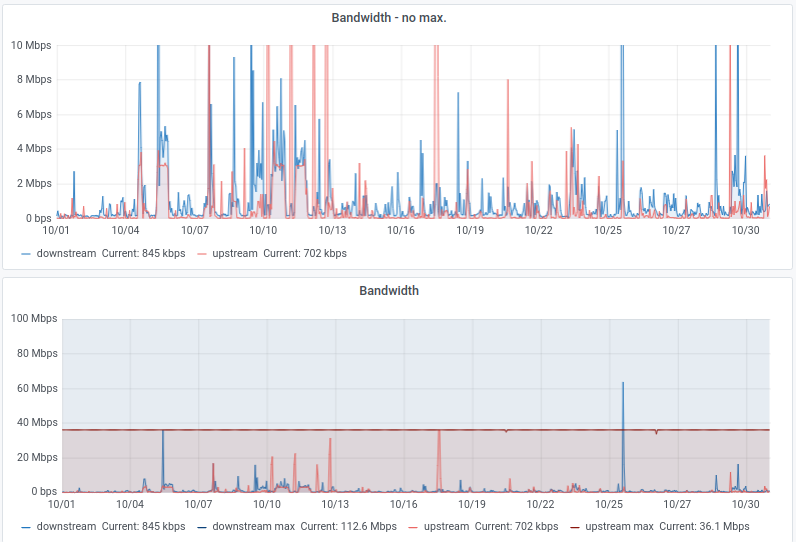 As a quick follow up to my previous post here’s a quick thought about how despite working on that terabyte per month data use, it is still ridiculously low when looked at from an overall line capacity point of view.
As a quick follow up to my previous post here’s a quick thought about how despite working on that terabyte per month data use, it is still ridiculously low when looked at from an overall line capacity point of view.
Working on that Terabyte per Month
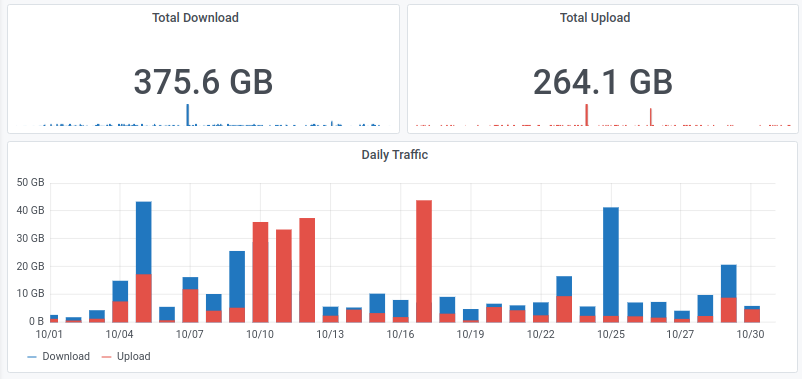 Out of interest, I’ve been monitoring my monthly data usage over my DSL line at home for many years now. Up until last year, there was only a small increase year by year and in 2019 I consistently reached about 120 GB per month. This has changed quite significantly this year due to the ‘pandemic home office’ style of work I have adopted. I’m not quite there yet, but the 1 TB per month of data use at home is not that far away anymore. But even if I arrived at this point I’d only use a tiny fraction of the amount of data that could be transferred over the line per month.
Out of interest, I’ve been monitoring my monthly data usage over my DSL line at home for many years now. Up until last year, there was only a small increase year by year and in 2019 I consistently reached about 120 GB per month. This has changed quite significantly this year due to the ‘pandemic home office’ style of work I have adopted. I’m not quite there yet, but the 1 TB per month of data use at home is not that far away anymore. But even if I arrived at this point I’d only use a tiny fraction of the amount of data that could be transferred over the line per month.
You Better Have An Older Notebook If You Need A 4 TB SSD
One and a half years ago in March 2019, prices for 2 TB SSDs had finally come down enough so I could afford upgrading a couple of notebooks. Since then, despite constant efforts to move unused data to long term offline storage, the amount data I store on my work notebooks keeps rising. So I am keeping a close eye on the price for 4 TB SSD drives just for the fun of it. As it turns out, it’s better at the moment to actually have an older notebook for that amount of SSD storage!
Continue reading You Better Have An Older Notebook If You Need A 4 TB SSD
Getting My Volume Keys Back
One pain point I have with more recent notebooks is that manufacturers have decided to no longer have dedicated function keys for important things such as changing the sound volume or muting the microphone. Instead, these features are now part of the standard ‘F’ function keys which I guess the typical user does not use anyway. But I am not the ‘standard user’ so when I was really fed up with this state recently, I starting looking for a fix.
Multiprocessing for My Nautilus Extension
Back in summer I spent some time working on a Nautilus file manager plugin to automate image rotation, shrinking, removing exif information and PDF’ing the resulting images into a single file. I have been using it quite a lot ever since and especially when treating a high number of files, say 1000 images at a time, the process can take 15-20 minutes easily. At the same time, I have noticed that my 4 thread CPU is not fully utilized as all processing is done sequentially. So I had a look how to run several things simultaneously to speed things up.
Continue reading Multiprocessing for My Nautilus ExtensionSwisscom Goes the Other Way – GSM on the Way Out
In a previous post I wrote a bit about UMTS being switched-off in Germany by two network operators in mid-2021, less than a year from now. While other network operators have similar plans I found it quite interesting that Swisscom has decided to do the opposite. Instead of switching-off UMTS soon, they have decided to phase out GSM by the end of 2020.
Continue reading Swisscom Goes the Other Way – GSM on the Way Out
ffmpeg and Those 16 CPU Cores for Video Encoding
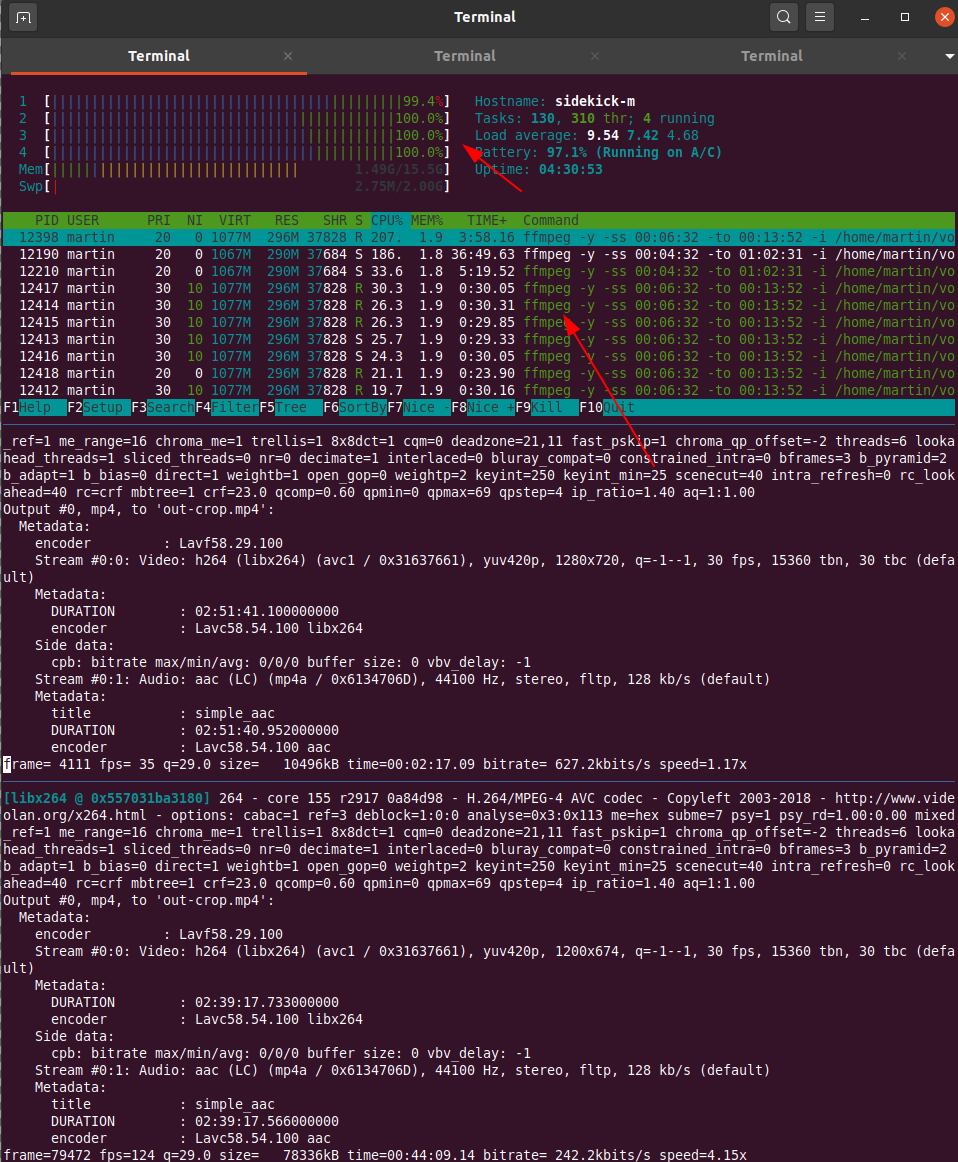 After the (virtual) Vintage Computing Festival Berlin is before the (virtual) festival and I’m in the process of cutting, upscaling, loudness normalizing and re-encoding the video stream dump into presentations for media.ccc.de. Ffmpeg is a great tool for this and with the right GPU hardware that the process probably flies. But I’m not a gamer and also don’t regularly modify and cut video streams so I don’t have that. As a result, going through all the steps to produce a final video of a presentation takes a Lenovo X250 2-core / 4 thread notebook around one hour for each hour of video material provided. Due to a lack of proper GPUs I thought I’d do the next best thing and just throw more and powerful CPUs at the problem that one can rent in the cloud. A 16 dedicated vCPU virtualized setup for 166 euros a month that can be rented on a per minute basis should do the trick. Or so I thought…
After the (virtual) Vintage Computing Festival Berlin is before the (virtual) festival and I’m in the process of cutting, upscaling, loudness normalizing and re-encoding the video stream dump into presentations for media.ccc.de. Ffmpeg is a great tool for this and with the right GPU hardware that the process probably flies. But I’m not a gamer and also don’t regularly modify and cut video streams so I don’t have that. As a result, going through all the steps to produce a final video of a presentation takes a Lenovo X250 2-core / 4 thread notebook around one hour for each hour of video material provided. Due to a lack of proper GPUs I thought I’d do the next best thing and just throw more and powerful CPUs at the problem that one can rent in the cloud. A 16 dedicated vCPU virtualized setup for 166 euros a month that can be rented on a per minute basis should do the trick. Or so I thought…
Continue reading ffmpeg and Those 16 CPU Cores for Video Encoding
Running the Vintage Computing Festival Berlin Online – Some Reflections
 Last weekend, I spent most of my waking hours at the Vintage Computing Festival Berlin. And as has become the new normal in our pandemic new world, it has taken place online. As I was running the BigBlueButton video conference server for the event I have learned a lot over the past weekend. To my relief but also somewhat to my frustration, I still don’t know where the capacity limit actually is.
Last weekend, I spent most of my waking hours at the Vintage Computing Festival Berlin. And as has become the new normal in our pandemic new world, it has taken place online. As I was running the BigBlueButton video conference server for the event I have learned a lot over the past weekend. To my relief but also somewhat to my frustration, I still don’t know where the capacity limit actually is.
Continue reading Running the Vintage Computing Festival Berlin Online – Some Reflections
